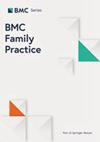美国退伍军人事务部 "以病人为中心的医疗之家 "基层医疗机构中人口健康管理工具与临床医生职业倦怠之间的关系
IF 3.2
3区 医学
Q1 MEDICINE, GENERAL & INTERNAL
引用次数: 0
摘要
技术负担和医疗复杂性是造成临床医生职业倦怠的重要原因。基于电子健康记录(EHR)的人群健康管理工具可用于识别高风险患者人群并实施预防性保健措施。然而,这些工具对临床医生职业倦怠的影响还不甚了解。我们的目的是评估基于电子病历的人群健康管理工具的评分与临床医生职业倦怠之间的关系。我们使用二元和多元逻辑回归对 2018 年退伍军人健康管理局(VA)全国初级保健人员调查进行了横截面分析,该调查以在线调查的形式对退伍军人健康管理局的所有初级保健人员(n = 4257,回复率 = 17.7%)进行了调查。我们的分析样本包括医护人员(医生、执业护士、医生助理)和护士(注册护士、执业护士)。结果包括两个测量高度职业倦怠的项目。主要预测因素包括对 10 种人口健康管理工具(如退伍军人风险预测算法、近期住院和急诊就诊等)的重要性评分。9种工具的高评分与较低的高职业倦怠几率相关,与退伍军人事务部的任期、团队角色、性别、种族、人员配备和培训等协变量无关。例如,与不使用或不了解该工具的临床医生相比,将风险预测算法评为重要的临床医生报告高职业倦怠水平的可能性较低(OR 0.73;CI 0.61-0.87),而且他们报告频繁职业倦怠(每周一次或以上)的可能性也较低(OR 0.71;CI 0.60-0.84)。倦怠的临床医生可能认为基于电子病历的工具并不重要,也可能没有使用这些工具进行护理管理。造成额外技术负担的工具可能需要进行调整,使其更易于使用、更直观、负担更小。找到改进工具使用的方法,简化人群健康管理的工作和/或减少因慢性病患者管理不善而造成的工作量,可能会减轻职业倦怠。要了解职业倦怠与人群健康管理工具评分之间的因果关系,还需要进行更多的研究。本文章由计算机程序翻译,如有差异,请以英文原文为准。
The association between population health management tools and clinician burnout in the United States VA primary care patient-centered medical home
Technological burden and medical complexity are significant drivers of clinician burnout. Electronic health record(EHR)-based population health management tools can be used to identify high-risk patient populations and implement prophylactic health practices. Their impact on clinician burnout, however, is not well understood. Our objective was to assess the relationship between ratings of EHR-based population health management tools and clinician burnout. We conducted cross-sectional analyses of 2018 national Veterans Health Administration(VA) primary care personnel survey, administered as an online survey to all VA primary care personnel (n = 4257, response rate = 17.7%), using bivariate and multivariate logistic regressions. Our analytical sample included providers (medical doctors, nurse practitioners, physicians’ assistants) and nurses (registered nurses, licensed practical nurses). The outcomes included two items measuring high burnout. Primary predictors included importance ratings of 10 population health management tools (eg. VA risk prediction algorithm, recent hospitalizations and emergency department visits, etc.). High ratings of 9 tools were associated with lower odds of high burnout, independent of covariates including VA tenure, team role, gender, ethnicity, staffing, and training. For example, clinicians who rated the risk prediction algorithm as important were less likely to report high burnout levels than those who did not use or did not know about the tool (OR 0.73; CI 0.61-0.87), and they were less likely to report frequent burnout (once per week or more) (OR 0.71; CI 0.60-0.84). Burned-out clinicians may not consider the EHR-based tools important and may not be using them to perform care management. Tools that create additional technological burden may need adaptation to become more accessible, more intuitive, and less burdensome to use. Finding ways to improve the use of tools that streamline the work of population health management and/or result in less workload due to patients with poorly managed chronic conditions may alleviate burnout. More research is needed to understand the causal directional of the association between burnout and ratings of population health management tools.
求助全文
通过发布文献求助,成功后即可免费获取论文全文。
去求助
来源期刊

BMC Family Practice
医学-医学:内科
CiteScore
3.20
自引率
0.00%
发文量
0
审稿时长
4-8 weeks
期刊介绍:
BMC Family Practice is an open access, peer-reviewed journal that considers articles on all aspects of primary health care research. The journal has a special focus on clinical decision making and management, continuing professional education, service utilization, needs and demand, and the organization and delivery of primary care and care in the community.
 求助内容:
求助内容: 应助结果提醒方式:
应助结果提醒方式:


